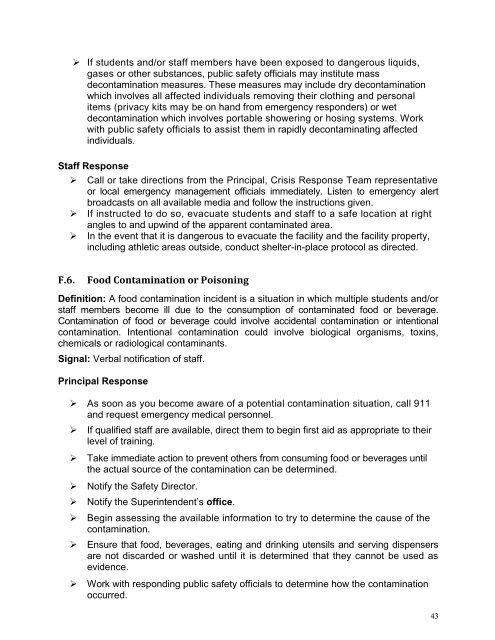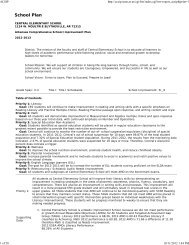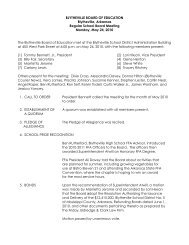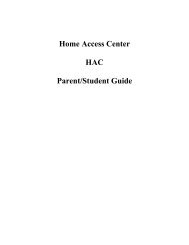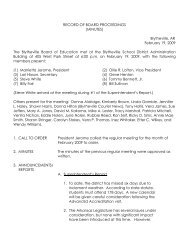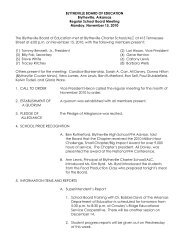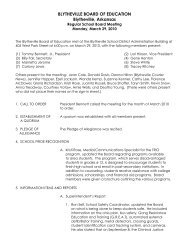District-Wide Safe Schools and Crisis Plan - Blytheville Public Schools
District-Wide Safe Schools and Crisis Plan - Blytheville Public Schools
District-Wide Safe Schools and Crisis Plan - Blytheville Public Schools
You also want an ePaper? Increase the reach of your titles
YUMPU automatically turns print PDFs into web optimized ePapers that Google loves.
If students <strong>and</strong>/or staff members have been exposed to dangerous liquids,<br />
gases or other substances, public safety officials may institute mass<br />
decontamination measures. These measures may include dry decontamination<br />
which involves all affected individuals removing their clothing <strong>and</strong> personal<br />
items (privacy kits may be on h<strong>and</strong> from emergency responders) or wet<br />
decontamination which involves portable showering or hosing systems. Work<br />
with public safety officials to assist them in rapidly decontaminating affected<br />
individuals.<br />
Staff Response<br />
Call or take directions from the Principal, <strong>Crisis</strong> Response Team representative<br />
or local emergency management officials immediately. Listen to emergency alert<br />
broadcasts on all available media <strong>and</strong> follow the instructions given.<br />
If instructed to do so, evacuate students <strong>and</strong> staff to a safe location at right<br />
angles to <strong>and</strong> upwind of the apparent contaminated area.<br />
In the event that it is dangerous to evacuate the facility <strong>and</strong> the facility property,<br />
including athletic areas outside, conduct shelter-in-place protocol as directed.<br />
F.6. Food Contamination or Poisoning<br />
Definition: A food contamination incident is a situation in which multiple students <strong>and</strong>/or<br />
staff members become ill due to the consumption of contaminated food or beverage.<br />
Contamination of food or beverage could involve accidental contamination or intentional<br />
contamination. Intentional contamination could involve biological organisms, toxins,<br />
chemicals or radiological contaminants.<br />
Signal: Verbal notification of staff.<br />
Principal Response<br />
As soon as you become aware of a potential contamination situation, call 911<br />
<strong>and</strong> request emergency medical personnel.<br />
If qualified staff are available, direct them to begin first aid as appropriate to their<br />
level of training.<br />
Take immediate action to prevent others from consuming food or beverages until<br />
the actual source of the contamination can be determined.<br />
Notify the <strong>Safe</strong>ty Director.<br />
Notify the Superintendent’s office.<br />
Begin assessing the available information to try to determine the cause of the<br />
contamination.<br />
Ensure that food, beverages, eating <strong>and</strong> drinking utensils <strong>and</strong> serving dispensers<br />
are not discarded or washed until it is determined that they cannot be used as<br />
evidence.<br />
Work with responding public safety officials to determine how the contamination<br />
occurred.<br />
43


